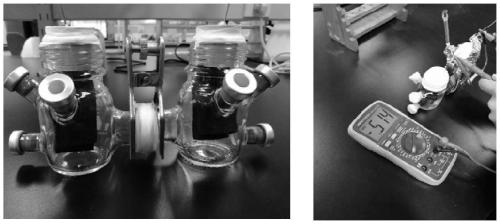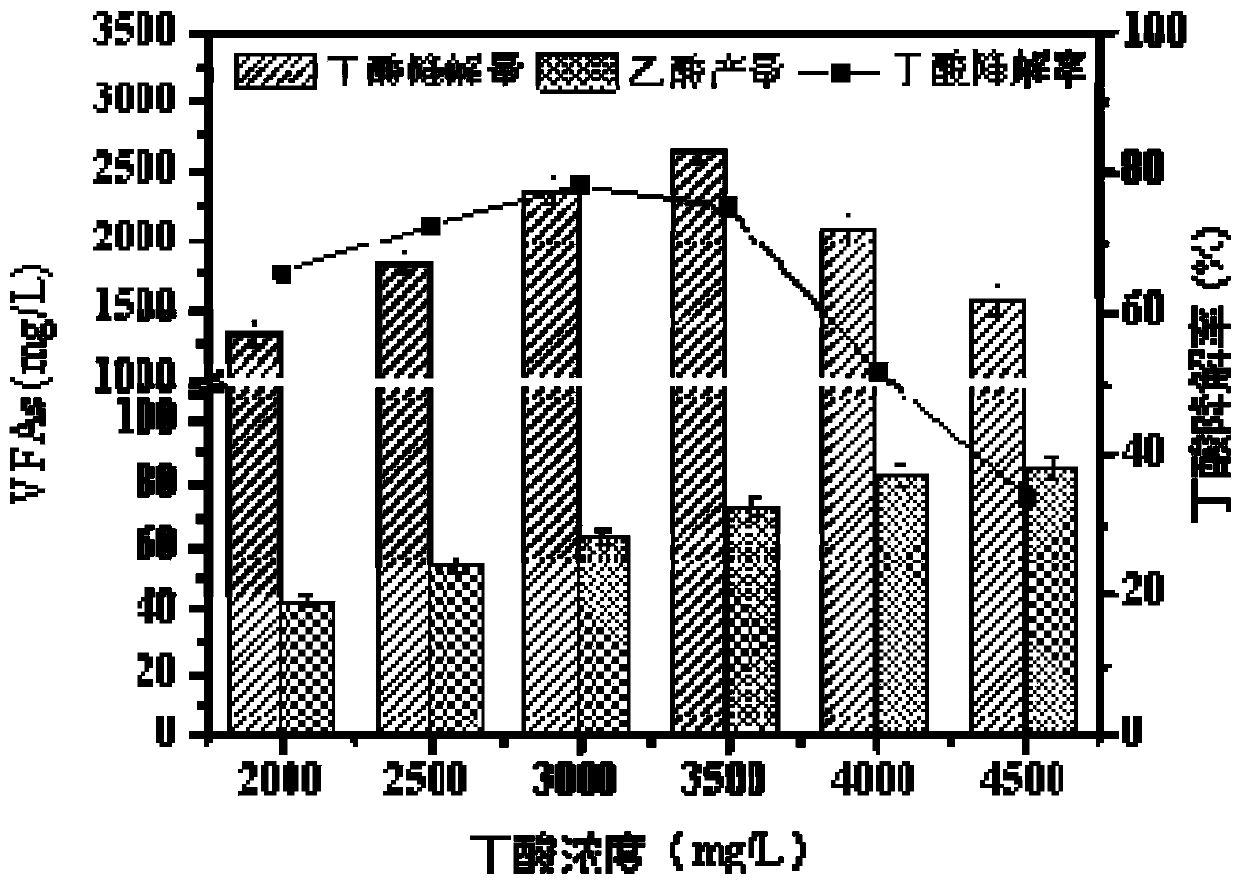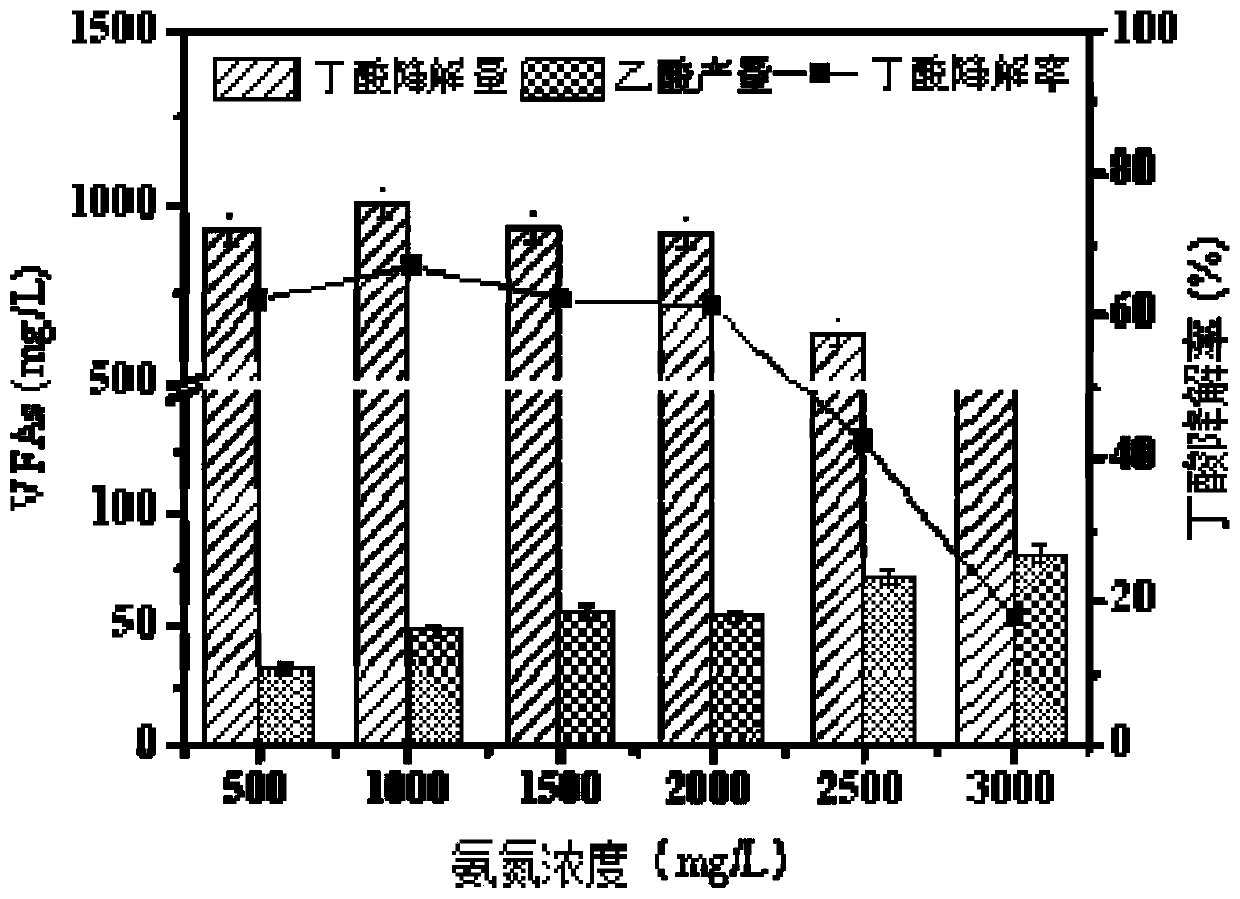Complex microbial agent for intensifying anaerobic degradation of butyric acid and construction method of complex microbial agent
A technology of compound bacterial agent and oxidative bacteria, which is applied in the direction of chemical instruments and methods, methods based on microorganisms, biochemical equipment and methods, etc., can solve the problems of high quality requirements for engineering technology and management personnel, increased operational difficulty and operating costs, Weaken the degradation ability of VFAs and other issues, and achieve the effect of flexible operation, simple structure and rapid start-up
- Summary
- Abstract
- Description
- Claims
- Application Information
AI Technical Summary
Problems solved by technology
Method used
Image
Examples
Embodiment 1
[0038] Example 1
[0039] This embodiment provides a composite bacterial agent that strengthens the anaerobic degradation of butyric acid and its construction method. The composite bacterial agent includes fatty acid oxidizing bacteria Syntrophomonas wolfei and electrogenic bacteria Geobactorsulfurreducens (hereinafter referred to as: G.sulfurreducen); the composite bacterial agent The build process of the agent is as follows:
[0040] (1) Activation and enrichment of G.sulfurreducen
[0041] G.sulfurreducens was purchased from the American Type Culture Collection (ATCC, number 51573). The components of the G.sulfurreducens medium used in this example mainly refer to the medium components recommended by ATCC, and are improved according to the actual situation of this experiment and relevant literature. The components are shown in Tables 1-3.
[0042] Table 1 Complete medium of G.sulfurreducens
[0043] Element content Element content sodium acetate 1....
Embodiment 2
[0069] According to the system of the present invention, the effects of different concentrations of butyric acid, different concentrations of ammonia nitrogen and different pH on the metabolic growth of mutual symbionts were studied respectively.
[0070] (1) To study the effects of different butyric acid concentrations (2000-4500mg / L) on the metabolic growth of mutual symbionts, the operation period is 19 days, and three groups are operated at the same time.
[0071] (2) To study the effects of different ammonia nitrogen concentrations (500-3000mg / L) on the metabolic growth of mutual symbionts, butyric acid was 1500mg / L, the operation period was 19 days, and three groups were operated at the same time.
[0072] (3) To study the effects of different pH (5.5-8.0) on the metabolic growth of mutual symbionts, butyric acid 1500mg / L, the operation cycle is 19 days, and three groups are operated at the same time.
[0073] In order to reduce the risk of bacterial contamination, the m...
Embodiment 3
[0078] Further study the application effect of the composite bacterial agent of the present invention in actual wastewater. The composite bacterial agent constructed under the optimum conditions in Example 2 was added to the sludge dehydration liquid anaerobic fermentation system and regulated according to the above-mentioned optimal factor range, the inoculum ratio of the composite bacterial agent was 20.5±5.5g VSS / L sewage . Measure the VFAs value before and after water out, the results are as follows Figure 5 .
[0079] Depend on Figure 5 The results showed that the VFAs of water decreased from 1013mgHAc / L to 245mgHAc / L, a decrease of 75.8%, among which butyric acid decreased by 88.3%, which was a significant decrease. It shows that the composite microbial agent of the present invention is better applied in the process of wastewater treatment.
PUM
 Login to View More
Login to View More Abstract
Description
Claims
Application Information
 Login to View More
Login to View More - R&D
- Intellectual Property
- Life Sciences
- Materials
- Tech Scout
- Unparalleled Data Quality
- Higher Quality Content
- 60% Fewer Hallucinations
Browse by: Latest US Patents, China's latest patents, Technical Efficacy Thesaurus, Application Domain, Technology Topic, Popular Technical Reports.
© 2025 PatSnap. All rights reserved.Legal|Privacy policy|Modern Slavery Act Transparency Statement|Sitemap|About US| Contact US: help@patsnap.com



